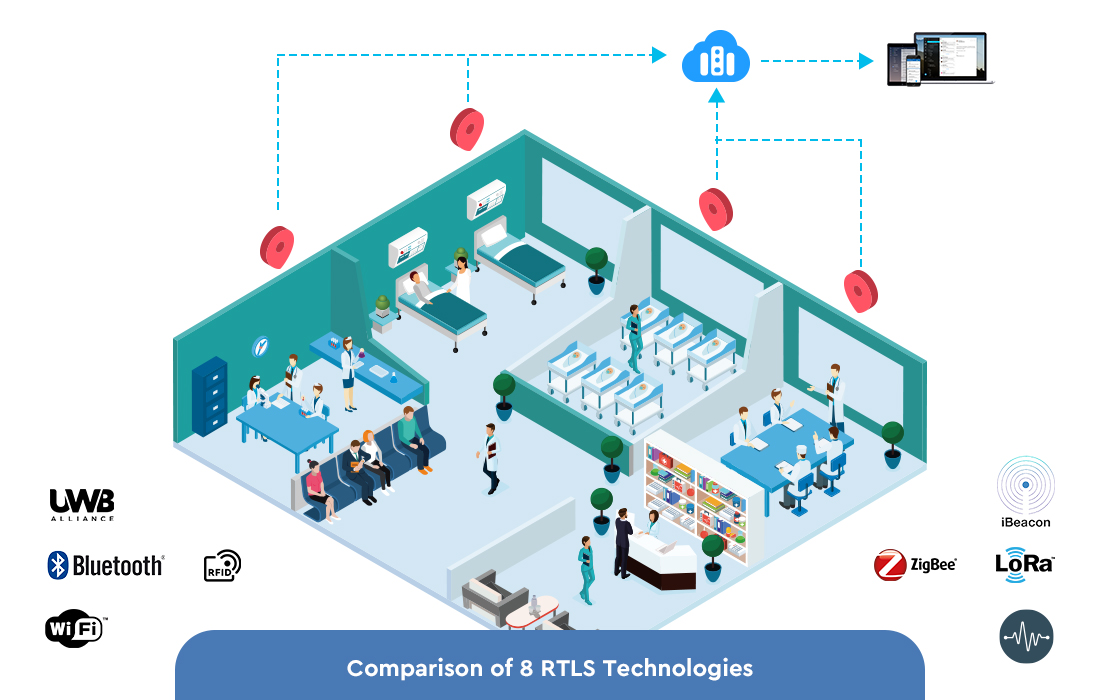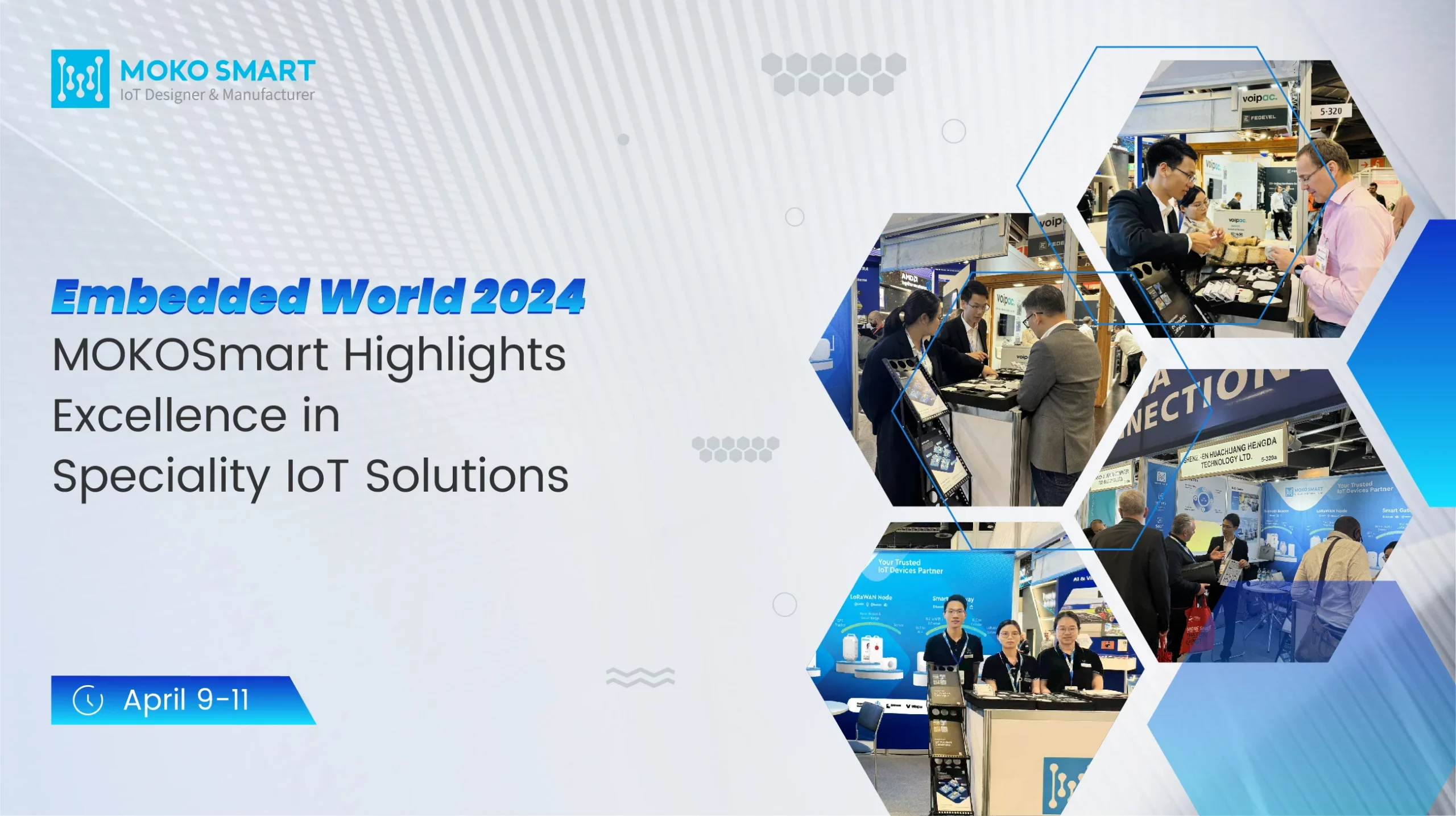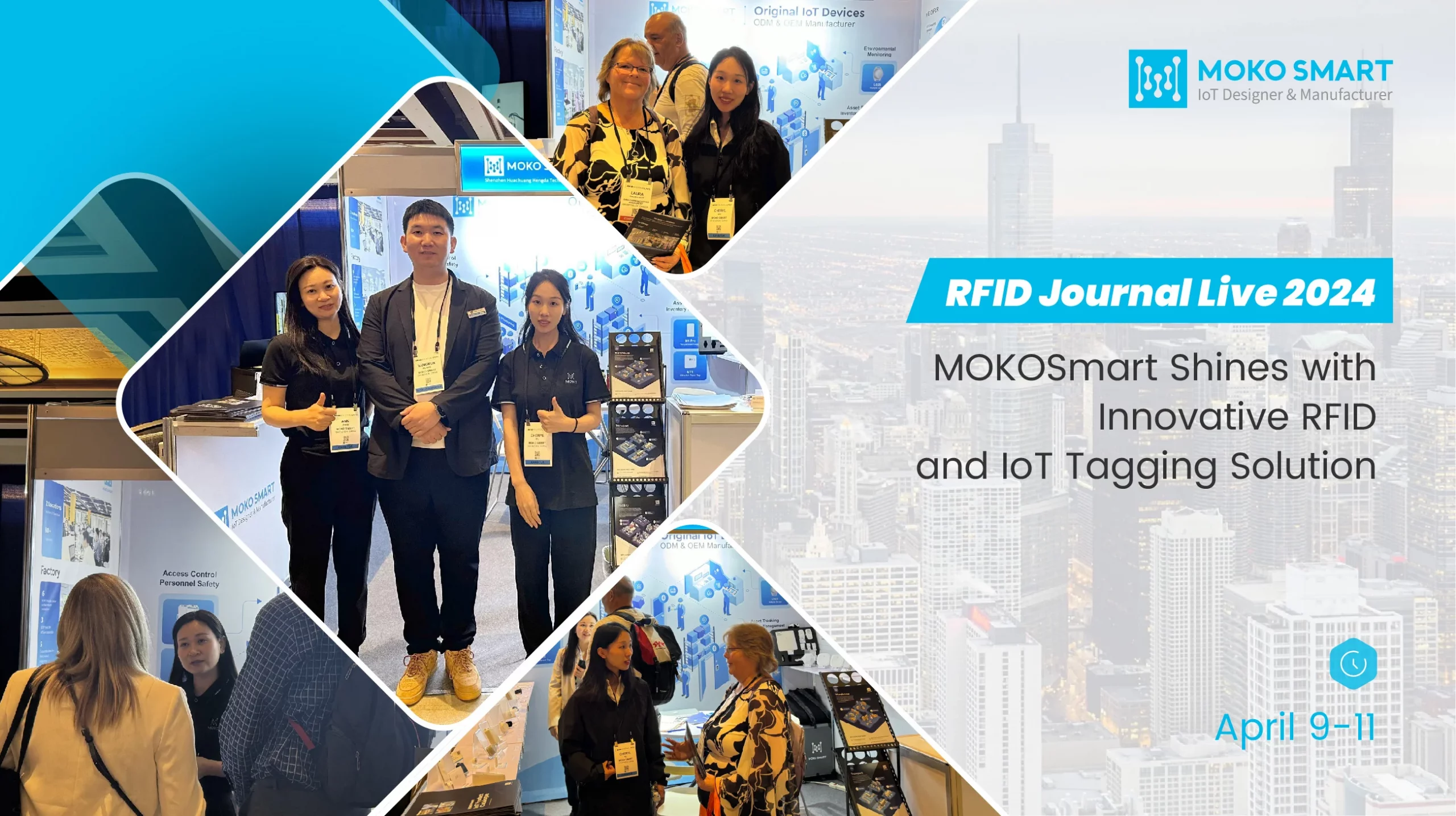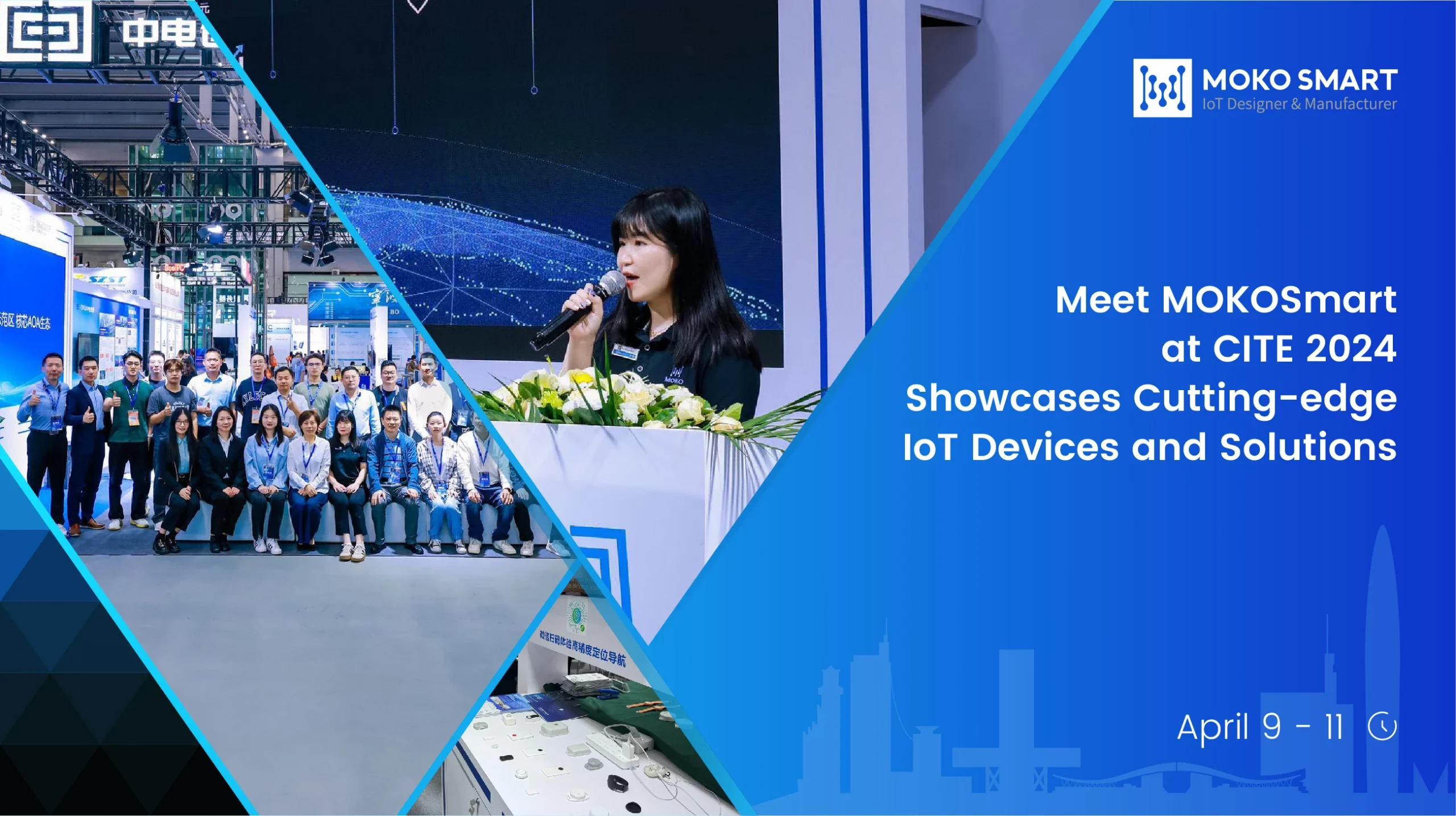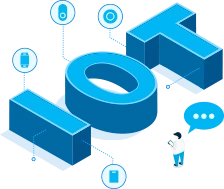Real-Time Location System (RTLS) technologies have transformed the way we track and locate objects, people, and assets in various industries. Whether it’s monitoring inventory in a warehouse, ensuring worker safety in a construction site, or optimizing logistics in a healthcare facility, RTLS solutions provide real-time visibility and actionable insights. In this article, we will explore and compare eight prominent RTLS technologies to help businesses make informed decisions when selecting the most suitable solution for their specific needs.
RTLS technologies utilize different communication methods and sensors to determine the real-time location of targets. These technologies empower businesses to enhance their operational efficiency, strengthen security measures, and optimize the allocation of resources. Through a thorough examination of the features, benefits, and limitations of each technology, we can acquire a comprehensive comprehension of its capabilities and potential applications.
A Comparison Table of 8 Types of RTLS Technologies
Before diving into the details of each RTLS technology, let’s begin with a summary of its key features and characteristics. The following table provides an overview for quick reference:
| TECHNOLOGY | REAL-TIME | ACCURACY | RANGE | POWER CONSUMPTION | INFRASTRUCTURE REQUIREMENTS | COST | APPLICATION |
|---|---|---|---|---|---|---|---|
| UWB RTLS | Yes | High | Short to Medium | Moderate | Complex | High | Healthcare, Manufacturing, Asset Tracking |
| Bluetooth RTLS | Yes | Low to High | Short | Low | Simple | Low to Medium | Indoor Navigation, Proximity Marketing |
| WiFi RTLS | Yes | Medium | Medium to Long | Moderate | Simple | Medium | Retail, Logistics, Inventory Management |
| RFID RTLS | No | Low to High | Short to Medium | Low | Moderate to High | Low | Supply Chain, Asset Tracking, Inventory |
| Zigbee RTLS | Yes | Medium | Short | Low | Moderate | Medium | Smart Home Automation, Building Management |
| LoRa RTLS | No | Low to High | Medium to Long | Low | Moderate to High | Medium | Agriculture, Smart Cities, Outdoor Tracking |
| iBeacon RTLS | No | Low | Short | Low | Simple | Low to Medium | Indoor Navigation, Proximity Applications |
| Ultrasonic RTLS | Yes | High | Short | Moderate | Complex | High | Robotics, Security, Indoor Positioning |
Detailed Information on the 8 Types of RTLS Technologies
Ultra-Wideband (UWB) RTLS
UWB RTLS utilizes ultra-wideband wireless technology for precise positioning and tracking. It offers high accuracy, fast data transfer rates, and resistance to signal interference. Compared to WiFi and RFID RTLS, UWB RTLS provides significantly higher accuracy and is capable of capturing location data in real time. It excels in applications that require precise indoor positioning, such as healthcare and manufacturing. However, UWB RTLS may require a more complex infrastructure setup due to the need for anchor nodes and time synchronization.
Bluetooth RTLS
Bluetooth RTLS utilizes Bluetooth or Bluetooth Low Energy (BLE) technology for proximity-based tracking. Bluetooth RTLS systems consist of beacons or tags that transmit signals to receivers, allowing for location determination based on signal strength. It provides convenience in implementation, affordability, and compatibility with a broad range of devices. Compared to other technologies like WiFi RTLS, Bluetooth RTLS provides lower power consumption and is ideal for short-range tracking applications. It finds applications in indoor navigation, asset tracking, and proximity marketing. However, Bluetooth RTLS may have lower accuracy compared to technologies like UWB or WiFi.
WiFi RTLS
WiFi RTLS utilizes the existing WiFi infrastructure to determine the location of tracked objects. By analyzing signal strength, time of arrival, and other parameters, WiFi RTLS systems provide reasonably accurate positioning. It is widely available and cost-effective since it leverages existing WiFi networks. Compared to other technologies, such as RFID RTLS, WiFi RTLS offers better accuracy and range. It is commonly used in retail, logistics, and inventory management for tracking assets and optimizing workflows. However, WiFi RTLS may be affected by signal interference and can have limitations in terms of accuracy, particularly in dense or crowded environments, compared to UWB RTLS.
RFID RTLS
RFID RTLS utilizes radio frequency identification technology to label and monitor assets. The technology involves the use of RFID tags, which comprise a microchip and an antenna. Readers interact with these tags, enabling the determination of their respective positions. RFID RTLS is known for its long reading range, cost-effectiveness, and suitability for asset tracking in industries such as retail, supply chain, and manufacturing. However, its accuracy is generally lower, especially in environments with obstacles like metal or liquids. RFID RTLS requires line-of-sight communication between the reader and the tag, limiting its flexibility compared to technologies like UWB RTLS.
Zigbee RTLS
Zigbee RTLS employs the Zigbee protocol, which is a wireless communication standard known for its low power consumption and short-range capabilities, to enable positioning and tracking functionalities. It is commonly used in smart home applications, warehouse management, and industrial automation. It can support a large number of devices, offers good localization accuracy within its range, and provides robust communication in noisy environments. Zigbee RTLS provides low power consumption and scalability advantages compared to technologies like WiFi and Bluetooth. However, it has a lower data transfer rate and range, limiting its suitability for certain applications compared to UWB RTLS.
LoRa RTLS
LoRa RTLS is an advanced technology that combines the LoRa communication protocol with location capabilities. LoRa is a wireless technology known for its ability to transmit data over long distances while minimizing power consumption, thereby extending the battery life of devices involved in communication. LoRa RTLS excels in outdoor tracking and monitoring applications, such as asset tracking in agriculture, smart city management, and wildlife monitoring. Compared to other technologies like UWB and Ultrasonic RTLS, LoRa RTLS provides a longer range and lower power consumption. However, LoRa RTLS does not support real-time positioning and infrastructure installation is more difficult than other technologies.
iBeacon RTLS
iBeacon RTLS is based on Apple’s iBeacon technology, which uses BLE for proximity-based tracking. iBeacons are small, low-cost devices that broadcast signals, allowing smartphones and other compatible devices to determine their proximity. iBeacon RTLS is specifically designed for proximity-based applications, such as indoor navigation, personalized marketing, and location-based services, and offers advantages in terms of ease of deployment and cost-effectiveness compared to technologies like UWB and Ultrasonic RTLS. However, its range and accuracy are limited compared to UWB RTLS, making it more suitable for applications requiring close-range tracking.
Ultrasonic RTLS
Ultrasonic RTLS employs ultrasonic waves for indoor positioning and tracking. The system calculates the position of objects or individuals by analyzing the duration it takes for ultrasonic signals to travel from transmitters to receivers. Compared to technologies like WiFi RTLS, ultrasonic RTLS offers high precision and immunity to electromagnetic interference. It is commonly used in robotics, security systems, and indoor positioning applications where accurate location tracking is crucial. However, Ultrasonic RTLS may require a more extensive infrastructure setup compared to other technologies.
Which RTLS Technology is the Most Suitable One?
UWB vs Bluetooth vs WiFi vs RFID vs Zigbee vs LoRa vs iBeacon vs Ultrasonic: Pros and Cons
UWB RTLS
Pros
- High accuracy- tracking with centimeter-level accuracy.
- Fast data transfer
- Resistance to signal interference
Cons
- Complex infrastructure setup
- Higher cost- specialized hardware and infrastructure requirements.
Bluetooth RTLS
Pros
- Low power consumption
- Ease of deployment
- Cost-effective
Cons
- Limited range
- Lower accuracy
WiFi RTLS
Pros
- Wide availability
- Medium to long-range coverage
- Improved accuracy
Cons
- Susceptible to signal interference
- Moderate power consumption
RFID RTLS
Pros
- Long reading range
- Cost-effective
- Low power consumption
Cons
- Line-of-sight limitations
- Limited accuracy
Zigbee RTLS
Pros
- Low power consumption
- Real-time tracking
- Scalability- supports a large number of devices, making them suitable for deployments with many tracked objects.
Cons
- Limited data transfer rate
- Range limitations
LoRa RTLS
Pros
- Long-range coverage
- Low power consumption
- Cost-effective
Cons
- Lower data transfer rate
- Higher latency
iBeacon RTLS
Pros
- Easy deployment
- Cost-effective
- Proximity-based interactions
Cons
- Limited range
- Reliance on specific devices- iBeacon RTLS requires devices with Bluetooth capabilities to interact with the beacons.
Ultrasonic RTLS
Pros
- High precision
- Immunity to electromagnetic interference
- Suitable for indoor applications
Cons
- Complex infrastructure setup
- Moderate power consumption
UWB vs Bluetooth vs WiFi vs RFID vs Zigbee vs LoRa vs iBeacon vs Ultrasonic: Factor consideration
Accuracy Requirements: Evaluate the level of accuracy needed for your application. Certain industries, like healthcare and manufacturing, may necessitate tracking systems with exceptionally high precision, while other sectors may be more flexible and able to tolerate lower levels of accuracy. If high accuracy is crucial for the application, technologies like UWB and RFID RTLS can be considered.
Range and Coverage: Assess the range and coverage needed for your tracking application. For applications that require extensive range coverage, technologies like LoRa RTLS and WiFi RTLS are suitable.
Power Consumption: Examine the power consumption characteristics of the RTLS technology. Consider whether your application requires battery-powered devices and if long-term operation without frequent battery replacement is necessary. Technologies such as Bluetooth RTLS, Zigbee RTLS, and LoRa RTLS are known for their low power consumption, enabling long-term operation on battery-powered devices.
Infrastructure and Deployment: Evaluate the infrastructure requirements and deployment complexity of the RTLS technology. Bluetooth RTLS and iBeacon RTLS have simple infrastructure requirements, making them easy to deploy. On the other hand, technologies like UWB RTLS and Ultrasonic RTLS may require more complex infrastructure setups.
Scalability: Consider the scalability of the RTLS technology. Assess whether the solution can accommodate the number of devices or objects you intend to track. Zigbee RTLS supports a large number of devices in a network, while RFID RTLS can handle multiple RFID tags simultaneously.
Interference and Environmental Factors: Take into account potential interference or environmental factors that could impact the performance of the RTLS technology. Factors such as obstacles, signal interference, or challenging environments may affect accuracy and reliability. Ultrasonic RTLS can be utilized in environments with potential signal interference or complex layouts, where ultrasonic waves are less susceptible to interference from obstacles or electromagnetic signals.
Cost: Consider the cost-effectiveness of the RTLS technology, including hardware, infrastructure, and maintenance expenses. Bluetooth RTLS, WiFi RTLS, and RFID RTLS are generally more cost-effective options compared to UWB RTLS or Ultrasonic RTLS.
Where do You Apply RTLS Technologies?
The different applications of RTLS are virtually limitless. After all, almost anyone can benefit from gaining a better understanding of how things truly move. Below, we will focus on highlighting some particularly common use cases and related applications.
Indoor and Outdoor Navigation
RTLS technologies provide accurate positioning and navigation solutions for both indoor and outdoor environments. This is particularly useful in large facilities, airports, shopping malls, and public spaces where people can benefit from precise directions, wayfinding, and location-based services.
Inventory and Supply Chain Management
RTLS plays a critical role in inventory and supply chain management by providing real-time visibility and tracking of goods throughout the supply chain. It enables organizations to monitor stock levels, streamline order fulfillment, optimize inventory replenishment, and minimize stockouts or overstocks.
Healthcare and Patient Monitoring
In healthcare settings, RTLS technologies are used for patient tracking, asset tracking, and staff monitoring. It enables hospitals to track patients, monitor medical equipment, manage inventory, and ensure the efficient allocation of resources for improved patient care.
Manufacturing and Warehouse Management
RTLS is employed in manufacturing and warehouse environments for optimizing production processes, inventory management, and logistics. It enables real-time tracking of goods, materials, and equipment, ensuring their timely availability, reducing bottlenecks, and enhancing operational efficiency.
Smart Cities and Infrastructure Monitoring
RTLS is utilized in smart city initiatives for various applications, including traffic management, parking optimization, waste management, and environmental monitoring. It helps cities collect real-time data, make informed decisions, and improve overall urban infrastructure and services.
Sports and Recreation
RTLS technologies have found applications in sports and recreational activities, providing enhanced player tracking, performance analysis, and spectator engagement. It enables precise tracking of athletes’ movements, enhancing training, and providing real-time insights for coaches and fans.
Security and Access Control
RTLS can be used for secure access control systems and monitoring restricted areas. It helps organizations track the movement of people within a facility, ensuring authorized access, preventing unauthorized entry, and enhancing security measures.
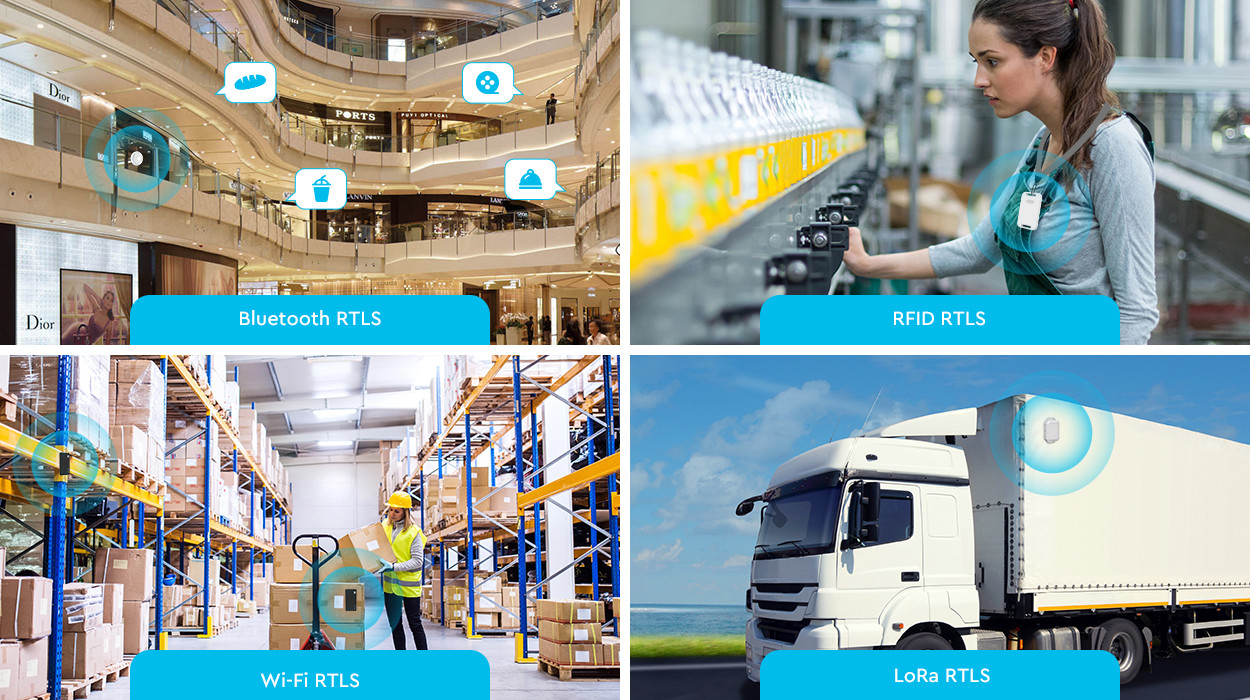
Why Should I Order RTLS Services from MOKOSmart Solutions?
When it comes to RTLS, MOKOSmart is a seasoned expert. With 17 years of experience in researching RTLS technologies, we have developed a range of highly acclaimed solutions. These include BLE, WiFi, LoRaWAN, and RFID technologies. Notable among their Bluetooth-based offerings are the H2A Location Beacon, M2 Asset Tracking Beacon, and B2 Smart Badge. Our RFID beacon, the H5, has also gained popularity. In addition, MOKOSmart provides solutions like the VT001 Vehicle Tracker and GT001 Goods Monitor Tracker, which utilize WiFi technology. Furthermore, we offer the LW004-PB Panic Button, LW008-MT Small LoRaWAN Tracker, and LW001-BG PRO LoRaWAN Tracker, all based on the LoRaWAN technology. Let’s explore the reasons why these products have become favorites among enterprises:
BLE RTLS
- IP67 Waterproof.
- Support button trigger and motion trigger.
- 6 Slots can be configured.
- General -20°C / + 60°C.
- The configuration options for a 3-axis accelerometer sensor include the G-value, sampling rate, and sensitivity settings.
WiFi RTLS
- The alarm will be triggered when something is abnormal.
- Enable OTA firmware upgrades and provide a visual data management platform.
- The GPIOs allow for the expansion of temperature and humidity sensors.
LoRaWAN RTLS
- Support GPS outdoor and BLE indoor geolocation.
- Built-in 3-axis accelerometer for motion detection.
- Firmware update Over The Air.
- Support vibration detection.
RFID RTLS
- Range of up to 120m.
- Additional motion sensor with trigger functionality.
- ConfigurableG-values, sampling rate, and sensitivity for the 3-axis accelerometer.
- Enable automatic tracking and monitoring of goods.
- IP67 waterproof standard.
RTLS Technologies Trends
Based on a report, the projected expansion of the global RTLS market is significant. It is anticipated to increase from USD 5.2 billion in 2023 to USD 16.2 billion by 2028, exhibiting a CAGR of 25.5% during the period from 2023 to 2028.
Future trends in RTLS technologies will revolve around advancements in precision, connectivity, intelligence, and efficiency. These trends include enhanced precision and accuracy through technologies like UWB and AI-based algorithms. Integration with AI and ML will facilitate advanced data analysis and enable instantaneous decision-making. Enhanced connectivity and interoperability will enable smooth data exchange and integration with other systems. Edge computing will enable real-time processing at the network edge, minimizing latency and enhancing responsiveness. Advancements in battery efficiency will lead to longer-lasting and more reliable RTLS devices. The introduction of 5G and upcoming generations of networks will deliver improved connectivity with faster speeds and enhanced reliability. Indoor mapping capabilities will continue to improve, enhancing user experience and asset tracking. Improved security and privacy measures will ensure the responsible use of location data. These trends represent the ongoing development and innovation in RTLS technologies, driving more accurate, efficient, and intelligent solutions to meet the evolving needs of various industries.
Conclusion
RTLS and related technologies are crucial for providing accurate sensing, positioning, and tracking data that can guide business decisions and improve flexibility. Organizations that have implemented RTLS systems have achieved substantial cost savings through improved efficiency, reduced losses of items, and increased productivity. These companies have also experienced enhanced agility and the ability to adapt to market dynamics and evolving customer demands. As RTLS technology becomes increasingly prevalent and advancements continue, the implementation process becomes more streamlined and customizable to meet the specific needs of businesses.
MOKOSmart ensures future-proof operations with its asset-tracking solutions seamlessly integrated with existing processes, technologies, and systems. With robust scalability, it maximizes the value of your investment, thanks to the network infrastructure that allows for adding more use cases and preparing for any future possibilities that may arise.
Continue Reading About the rtls technologies
